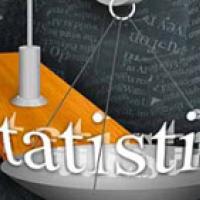
Maths in a minute: The prosecutor's fallacy
A woman's DNA matches that of a sample found at a crime scene. The chances of a DNA match are just one in two million, so the woman must be guilty, right?

Wrong. But it's a common mistake to make, known as the prosecutor's fallacy. It mistakes the one in two million for the probability of the woman's innocence. In order to assess the woman's guilt properly, we need to need to take the fact that she matched the sample as a given, and see how much more likely this makes her to be guilty than she was before the DNA evidence came to light.
A result called Bayes' theorem is useful in this context. The matching probability above implies that the woman's DNA is two million times more likely to match the sample if she is guilty, than if she is innocent. Bayes' theorem now says that:
Odds of guilt after DNA evidence = 2,000,000 x Odds of guilt before DNA evidence.
If our woman comes from a city of 500,000 people, and we think each of them is equally likely to have committed the crime, then her odds of guilt before the DNA evidence are about 1 in 500,000. Therefore:
Odds of guilt after DNA evidence = 2,000,000 × 1/500,000 = 4.
These are odds as we're used to them from the races. Translating the result into probabilities, this gives an 80% chance of guilt. Definitely not beyond reasonable doubt!
Further reading
Read more about the prosecutor's fallacy in It's a match!, which explores DNA evidence, and Beyond reasonable doubt, which explores a miscarriage of justice based on the fallacy.
This article now forms part of our coverage of the cutting-edge research done at the Isaac Newton Institute for Mathematical Sciences (INI) in Cambridge. The INI is an international research centre and our neighbour here on the University of Cambridge's maths campus. It attracts leading mathematical scientists from all over the world, and is open to all. Visit www.newton.ac.uk to find out more.
